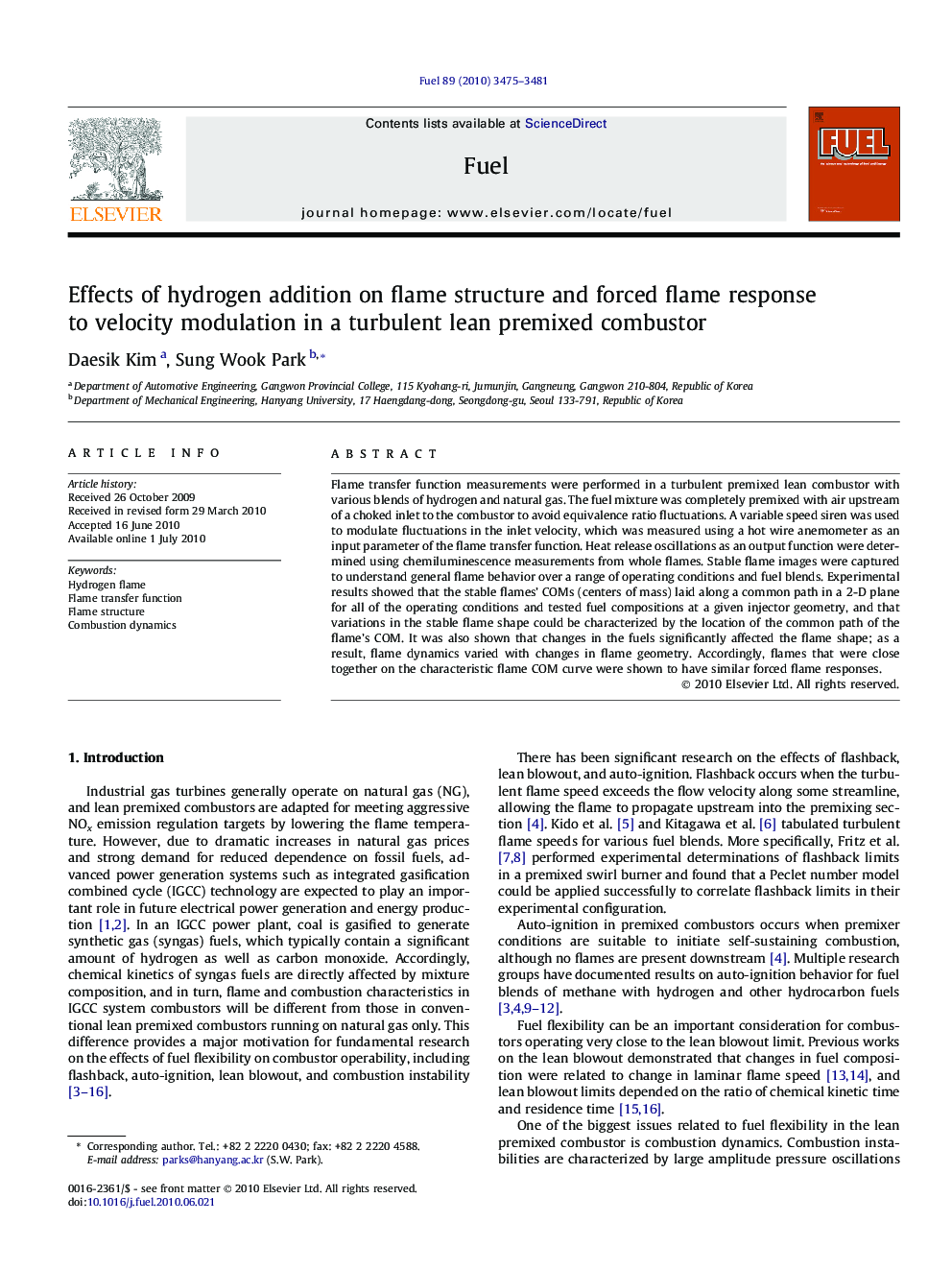| Article ID | Journal | Published Year | Pages | File Type |
|---|---|---|---|---|
| 206865 | Fuel | 2010 | 7 Pages |
Flame transfer function measurements were performed in a turbulent premixed lean combustor with various blends of hydrogen and natural gas. The fuel mixture was completely premixed with air upstream of a choked inlet to the combustor to avoid equivalence ratio fluctuations. A variable speed siren was used to modulate fluctuations in the inlet velocity, which was measured using a hot wire anemometer as an input parameter of the flame transfer function. Heat release oscillations as an output function were determined using chemiluminescence measurements from whole flames. Stable flame images were captured to understand general flame behavior over a range of operating conditions and fuel blends. Experimental results showed that the stable flames’ COMs (centers of mass) laid along a common path in a 2-D plane for all of the operating conditions and tested fuel compositions at a given injector geometry, and that variations in the stable flame shape could be characterized by the location of the common path of the flame’s COM. It was also shown that changes in the fuels significantly affected the flame shape; as a result, flame dynamics varied with changes in flame geometry. Accordingly, flames that were close together on the characteristic flame COM curve were shown to have similar forced flame responses.
